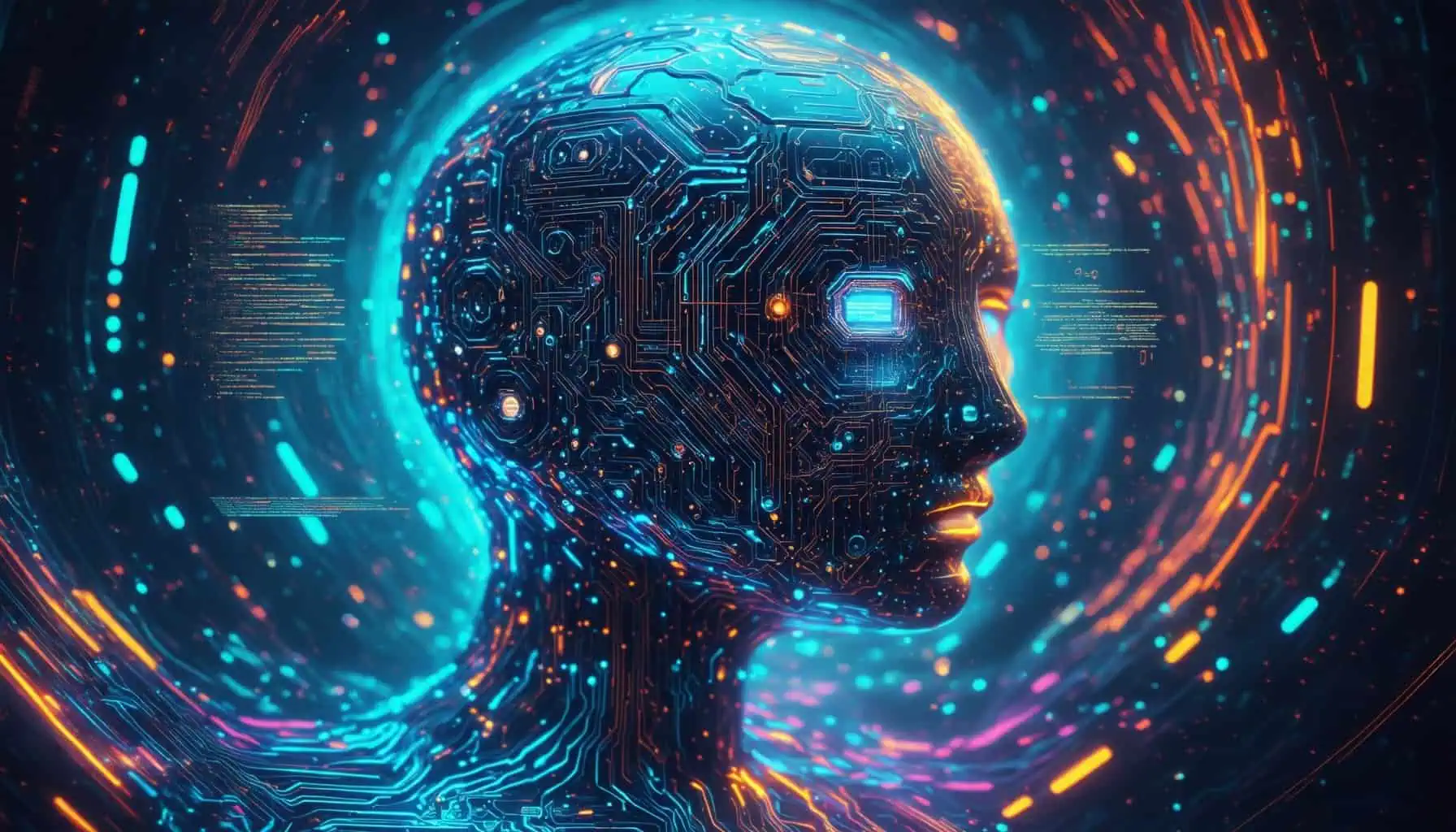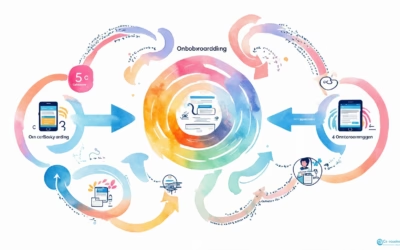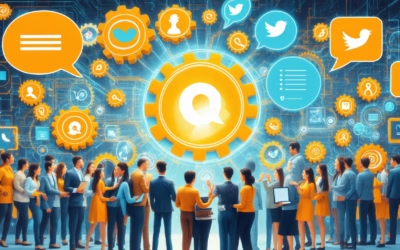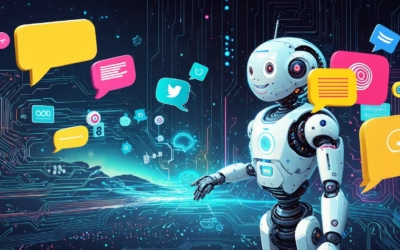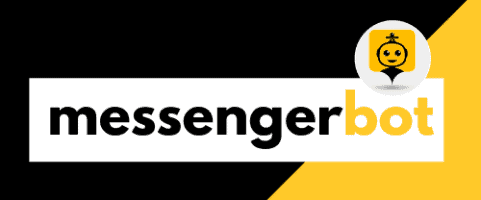Key Takeaways
- NLP chatbots utilize natural language processing to enhance user interactions and provide intuitive communication experiences.
- Key features include understanding context, intent recognition, and continuous learning, making them effective for businesses.
- Leading NLP frameworks like Google Dialogflow and IBM Watson Assistant offer robust solutions for creating chatbots.
- Building a chatbot from scratch involves defining its purpose, selecting a development platform, and implementing essential NLP techniques.
- Real-world examples, such as Messenger Bots, demonstrate how NLP can streamline communication and improve customer service.
In today’s digital landscape, NLP chatbots have emerged as powerful tools that enhance user interaction through natural language processing. This article, titled NLP Chatbot Example: Exploring Natural Language Processing, Best Practices, and How to Build Your Own Chatbot from Scratch, delves into the fascinating world of chatbots using NLP. We will begin by defining what an NLP chatbot is and exploring its key features, followed by a real-world NLP chatbot example that showcases how natural language processing for chatbots can significantly improve functionality. Additionally, we will compare the best NLP frameworks for chatbots, including a case study on the most effective chatbot natural language processing solutions available today. As we progress, we will clarify the distinction between NLP and AI, and examine how tools like ChatGPT fit into the NLP chatbot ecosystem. Finally, we will provide a comprehensive, step-by-step guide on how to create your own chatbot from scratch using NLP, along with valuable resources from GitHub for further exploration. Join us as we unlock the potential of chatbots and discover how to leverage natural language processing chatbots to enhance user experiences.
What is an NLP Chatbot?
An NLP chatbot is an advanced software application designed to understand, interpret, and respond to human language in a conversational manner. These AI-driven chatbots utilize natural language processing techniques to facilitate seamless interactions between users and machines, enabling a more intuitive communication experience that closely resembles human conversation.
Understanding the Basics of NLP Chatbots
NLP chatbots leverage sophisticated algorithms to analyze and process user inputs, allowing them to engage in meaningful conversations. By understanding context and recognizing user intent, these chatbots can provide relevant responses that enhance user satisfaction. The ability to learn from interactions over time further improves their effectiveness, making them invaluable tools for businesses looking to streamline communication.
Key Features of Natural Language Processing Chatbots
- Understanding Context: NLP chatbots analyze the context of user inputs, allowing them to comprehend nuances, idioms, and variations in language. This capability enhances their ability to provide relevant responses.
- Intent Recognition: By employing machine learning algorithms, NLP chatbots can identify user intent, which helps them determine the appropriate action or response. This is crucial for delivering accurate and helpful information.
- Continuous Learning: Many NLP chatbots are designed to learn from interactions over time, improving their responses and understanding of user preferences. This adaptive learning process is essential for maintaining relevance and efficiency.
- Multilingual Support: Advanced NLP chatbots can communicate in multiple languages, broadening their usability across diverse user bases. This feature is particularly beneficial for global businesses.
- Integration Capabilities: NLP chatbots can be integrated with various platforms, including messaging applications like Facebook Messenger, allowing businesses to engage with customers where they are most active.
Recent studies indicate that the implementation of NLP chatbots can significantly enhance customer service efficiency and satisfaction. According to a report by Gartner, by 2025, 75% of customer service interactions will be powered by AI technologies, including NLP chatbots, underscoring their growing importance in the digital landscape. For further reading on the impact and functionality of NLP chatbots, refer to sources such as the Journal of Artificial Intelligence Research and industry reports from leading tech firms.
What is NLP with Example?
Real-World NLP Chatbot Example
Natural Language Processing (NLP) is a subfield of artificial intelligence that focuses on the interaction between computers and humans through natural language. It enables machines to understand, interpret, and respond to human language in a valuable way. A prime example of an NLP chatbot is the Messenger Bot, which utilizes advanced NLP techniques to enhance user interactions across various platforms. By leveraging NLP, the Messenger Bot can interpret user messages and provide relevant responses, significantly improving the user experience.
For instance, when a user sends a query about a product, the Messenger Bot can analyze the text, identify key components, and respond with accurate information or direct the user to the appropriate resources. This capability exemplifies how NLP chatbots can streamline communication and provide immediate assistance, making them invaluable tools for businesses looking to enhance customer engagement. To explore more about the applications of chatbots, check out our article on real-life applications of chatbots.
How NLP Enhances Chatbot Functionality
NLP enhances chatbot functionality through several key components that allow for more effective communication. These components include:
1. **Text Analysis**: NLP involves breaking down text into manageable pieces to analyze its structure and meaning. This includes tokenization, part-of-speech tagging, and named entity recognition, which are crucial for understanding user intent.
2. **Sentiment Analysis**: This technique allows machines to determine the emotional tone behind a series of words, which is particularly useful in understanding customer feedback and social media interactions. By analyzing sentiment, chatbots can tailor their responses to better meet user needs.
3. **Machine Translation**: NLP powers translation services, enabling real-time translation of text from one language to another, as seen in tools like Google Translate. This feature is essential for chatbots that serve a global audience, allowing them to communicate effectively in multiple languages.
4. **Autocomplete and Predictive Text**: NLP algorithms predict the next word in a sentence based on context, improving typing efficiency in applications like messaging apps. This functionality can enhance user interaction by making conversations smoother and more intuitive.
5. **Chatbots and Virtual Assistants**: NLP is integral to the functionality of chatbots, such as those used in customer service, where they can understand and respond to user inquiries effectively. Messenger Bots utilize NLP to interpret user messages and provide relevant responses, enhancing user experience.
Recent studies highlight the advancements in NLP through deep learning techniques, which have significantly improved the accuracy of language models. For instance, the introduction of transformer models, such as BERT and GPT-3, has revolutionized how machines process language, allowing for more nuanced understanding and generation of text.
In summary, NLP is a critical technology that bridges the gap between human communication and machine understanding, with applications ranging from chatbots to translation services, making it an essential area of study in artificial intelligence. For more insights on building your own chatbot, visit our guide on building your own AI chatbot.
Which NLP is Best for Chatbots?
When considering the best Natural Language Processing (NLP) platforms for chatbots, several key factors come into play, including accuracy, ease of integration, and support for multiple languages. Here are some of the top NLP chatbot platforms in 2025:
- Google Dialogflow: Known for its powerful machine learning capabilities, Dialogflow allows developers to create conversational interfaces for various platforms. It supports voice and text interactions and integrates seamlessly with Google Cloud services, making it a top choice for businesses looking to leverage AI in customer service.
- Microsoft Bot Framework: This comprehensive framework enables developers to build, test, and deploy chatbots across multiple channels. With its integration with Azure Cognitive Services, it offers advanced NLP features, including sentiment analysis and language understanding, which enhance user interactions.
- IBM Watson Assistant: Renowned for its robust AI capabilities, Watson Assistant provides businesses with tools to create highly personalized chatbot experiences. Its natural language understanding (NLU) allows for context-aware conversations, making it suitable for complex customer queries.
- Rasa: An open-source framework, Rasa is favored for its flexibility and control over the chatbot’s behavior. It allows developers to build custom NLP models tailored to specific business needs, making it ideal for organizations that require a high degree of customization.
- Amazon Lex: This service powers conversational interfaces using the same deep learning technologies that drive Amazon Alexa. Lex provides automatic speech recognition (ASR) and natural language understanding, enabling developers to create applications that can engage users in a natural way.
- Tidio: Tidio combines live chat and chatbot functionalities, making it a versatile option for businesses. Its NLP capabilities allow for automated responses to common inquiries, enhancing customer engagement while reducing response times.
- Chatbot.com: This platform offers an easy-to-use interface for creating chatbots without extensive coding knowledge. Its NLP features help in understanding user intent, making it suitable for small to medium-sized businesses looking to improve customer interaction.
- LivePerson: Focused on conversational commerce, LivePerson uses AI to facilitate meaningful interactions between brands and consumers. Its NLP technology helps in understanding customer needs, driving better engagement and conversion rates.
- Kore.ai: This enterprise-grade platform provides advanced NLP capabilities and is designed for large organizations. Kore.ai’s bots can handle complex queries and integrate with various enterprise systems, making it a robust choice for businesses with extensive customer service needs.
- ManyChat: Primarily focused on marketing automation, ManyChat allows businesses to create chatbots for Facebook Messenger and SMS. Its user-friendly interface and NLP features enable effective customer engagement and lead generation.
In conclusion, the best NLP for chatbots depends on specific business requirements, including the desired level of customization, integration capabilities, and the complexity of interactions. For businesses looking to enhance their customer service through chatbots, platforms like Google Dialogflow and IBM Watson Assistant stand out due to their advanced NLP features and ease of use.
Best NLP Chatbot Example: A Case Study
To illustrate the effectiveness of NLP chatbots, let’s examine a case study involving a retail company that implemented an NLP chatbot to enhance customer service. By integrating a chatbot using NLP, the company was able to:
- Improve Response Times: The chatbot provided instant responses to customer inquiries, significantly reducing wait times compared to traditional customer service methods.
- Increase Customer Satisfaction: With the ability to understand and process natural language, the chatbot effectively addressed customer concerns, leading to higher satisfaction ratings.
- Streamline Operations: By automating common queries, the chatbot freed up human agents to focus on more complex issues, optimizing overall operational efficiency.
- Gather Valuable Insights: The chatbot collected data on customer interactions, allowing the company to analyze trends and improve its service offerings.
This case study exemplifies how implementing an NLP chatbot can transform customer engagement and operational efficiency. For businesses considering a chatbot solution, exploring platforms like Brain Pod AI can provide additional insights into the capabilities of NLP in enhancing customer interactions.
Is ChatGPT NLP?
ChatGPT is a prime example of how natural language processing (NLP) can be harnessed to create sophisticated chatbots. As a product of OpenAI, ChatGPT utilizes advanced NLP techniques to facilitate engaging and meaningful conversations with users. By understanding user inputs and generating contextually relevant responses, ChatGPT exemplifies the capabilities of modern NLP in chatbots.
Exploring ChatGPT as an NLP Tool
Natural Language Processing (NLP) is a specialized domain within artificial intelligence (AI) that focuses on the interaction between computers and human language. ChatGPT, developed by OpenAI, is a sophisticated chatbot that utilizes NLP techniques to facilitate text-based conversations. It is designed to comprehend user inputs, respond accurately, and even create original content, showcasing the capabilities of modern NLP.
ChatGPT is classified as a Large Language Model (LLM), trained on extensive datasets comprising diverse text sources. This training allows it to learn the nuances of language, grammar, and context, enhancing its understanding of human communication. The operational mechanism of ChatGPT involves:
- Input: Users interact with ChatGPT by providing text prompts or questions.
- Processing: The model employs advanced NLP algorithms to analyze the input, decipher its meaning, and determine the context of the conversation.
- Output: Based on this analysis, ChatGPT generates coherent and contextually relevant responses that mimic human-like conversation.
Benefits of Using ChatGPT in Chatbots
Integrating ChatGPT into chatbots offers numerous advantages, particularly in enhancing user experience and engagement. Here are some key benefits:
- Improved Customer Service: ChatGPT can provide instant responses to customer inquiries, resolving issues efficiently and enhancing satisfaction.
- Content Creation: The model assists in generating articles, social media content, and emails, streamlining the writing process for businesses.
- Educational Support: ChatGPT can offer explanations and tutoring, making it a valuable resource for students seeking assistance.
- Coding Assistance: Developers can leverage ChatGPT for coding tasks, debugging, and gaining programming insights.
By utilizing ChatGPT, businesses can enhance their chatbots’ capabilities, making them more responsive and effective in meeting user needs. For further exploration of NLP and its applications in chatbots, consider checking out resources like IBM’s overview of NLP.
How is NLP different from AI?
Natural Language Processing (NLP) and Artificial Intelligence (AI) are interconnected fields, but they serve distinct purposes and utilize different methodologies. Understanding the differences between these two domains is essential for leveraging their capabilities effectively in various applications, especially in the context of chatbots.
Distinguishing Between NLP and AI
Definition and Scope:
- Natural Language Processing (NLP): NLP is a subfield of AI focused on the interaction between computers and humans through natural language. It encompasses various techniques to enable machines to understand, interpret, and generate human language in a valuable way. Key components include:
- Tokenization: Breaking text into individual words or phrases.
- Parsing: Analyzing the grammatical structure of sentences.
- Named Entity Recognition (NER): Identifying and classifying key entities in text, such as names, organizations, and locations.
- Part-of-Speech Tagging: Assigning parts of speech to each word (e.g., noun, verb) to understand context.
- Artificial Intelligence (AI): AI is a broader concept that refers to the simulation of human intelligence processes by machines. This includes learning, reasoning, problem-solving, perception, and language understanding. AI encompasses various technologies, including machine learning, robotics, and computer vision, in addition to NLP.
The Role of NLP in AI-Powered Chatbots
Functionality:
- NLP: Primarily concerned with language comprehension and generation. It enables applications such as chatbots, sentiment analysis, and language translation. For instance, Messenger Bots utilize NLP to understand user queries and respond appropriately, enhancing user interaction through conversational interfaces.
- AI: Encompasses a wider range of functionalities beyond language, including image recognition, autonomous decision-making, and predictive analytics. AI systems can analyze data patterns and make predictions or recommendations based on that data.
In summary, while NLP is a specialized area within the broader field of AI focused on language, AI encompasses a wide range of technologies and applications. Understanding these distinctions is crucial for effectively implementing chatbots using NLP and enhancing user experiences across digital platforms.
How do you make a chatbot from scratch using NLP?
Creating a chatbot from scratch using NLP involves several key steps that ensure the bot is effective and user-friendly. Below is a detailed guide to help you through the process of building your own nlp chatbot.
Step-by-Step Guide to Building a Chatbot Using NLP
- Define the Purpose and Scope: Clearly outline the chatbot’s objectives, target audience, and the specific tasks it will perform. This foundational step ensures that the chatbot meets user needs effectively.
- Select a Development Platform: Choose a robust platform such as Dialogflow, Rasa, or Microsoft Bot Framework. These platforms provide essential tools for natural language processing chatbots and integration capabilities.
- Design the Conversation Flow: Map out the conversation paths, including user intents and possible responses. This can be done using flowcharts or conversation design tools to visualize interactions.
- Implement NLP Techniques: Utilize NLP libraries such as spaCy or NLTK to process and analyze user inputs. These libraries help in understanding user intent, extracting entities, and managing context.
- Train the Chatbot: Gather and preprocess training data, including user queries and responses. Use this data to train the chatbot, ensuring it can accurately interpret and respond to various inputs. Regularly update the training data to improve performance.
- Test and Iterate: Conduct thorough testing to identify areas for improvement. Gather user feedback and refine the chatbot’s responses and capabilities based on real-world interactions.
- Deploy and Monitor: Launch the chatbot on your chosen platform, such as a website or messaging app. Continuously monitor its performance using analytics tools to track user engagement and satisfaction.
- Optimize and Update: Regularly update the chatbot with new data and features based on user interactions and advancements in nlp for chatbots. This ensures the chatbot remains relevant and effective.
NLP Chatbot Project: Tools and Resources
When embarking on your chatbot natural language processing project, leveraging the right tools and resources is crucial. Here are some recommended tools:
- Development Platforms: As mentioned, platforms like Dialogflow and Rasa are excellent for building chatbots using nlp.
- NLP Libraries: Libraries such as spaCy and NLTK provide powerful tools for processing language and understanding user inputs.
- Analytics Tools: Use analytics tools to monitor user interactions and improve the chatbot’s performance over time. Platforms like Google Analytics can be integrated for this purpose.
- Documentation and Tutorials: Resources like Messenger Bot Tutorials offer valuable insights into building and optimizing your chatbot.
By following these steps and utilizing the right tools, you can create a highly functional nlp chatbot example that enhances user engagement and meets your business objectives.
NLP Chatbot GitHub Resources
Exploring GitHub for NLP chatbot resources can significantly enhance your understanding and implementation of natural language processing chatbots. GitHub hosts a variety of repositories that provide code examples, frameworks, and tools specifically designed for building chatbots using NLP. Here, we will delve into two key areas: Python repositories and free examples that can kickstart your chatbot development journey.
Exploring NLP Chatbot Python GitHub Repositories
Python is one of the most popular programming languages for developing nlp chatbots due to its simplicity and the powerful libraries available. Some notable GitHub repositories include:
- Rasa: An open-source framework for building contextual AI assistants and chatbots natural language processing. Rasa provides tools for intent recognition, dialogue management, and more.
- ChatScript: A rule-based engine that allows developers to create chatbots using nlp with a focus on natural conversation.
- Microsoft Bot Framework: A comprehensive framework for building chatbots nlp applications that can integrate with various channels.
- DeepPavlov: A library for building chatbot natural language processing applications, offering pre-trained models and tools for dialogue systems.
These repositories not only provide code but also documentation and community support, making it easier to implement nlp for chatbots effectively.
Free NLP Chatbot Examples and Projects on GitHub
For those looking to see practical implementations of nlp chatbots, GitHub is replete with free examples and projects. Here are a few standout options:
- Simple Chatbot: A beginner-friendly project that demonstrates basic natural language processing for chatbot functionalities.
- Chatbot using NLP: This project showcases how to create a simple nlp bot that can answer user queries based on predefined responses.
- AI Chatbot: A more advanced example that integrates machine learning techniques for enhanced user interaction.
These projects serve as excellent starting points for anyone interested in developing their own chat bot using nlp. By studying these examples, you can gain insights into the architecture and functionality of effective chatbots using nlp.

